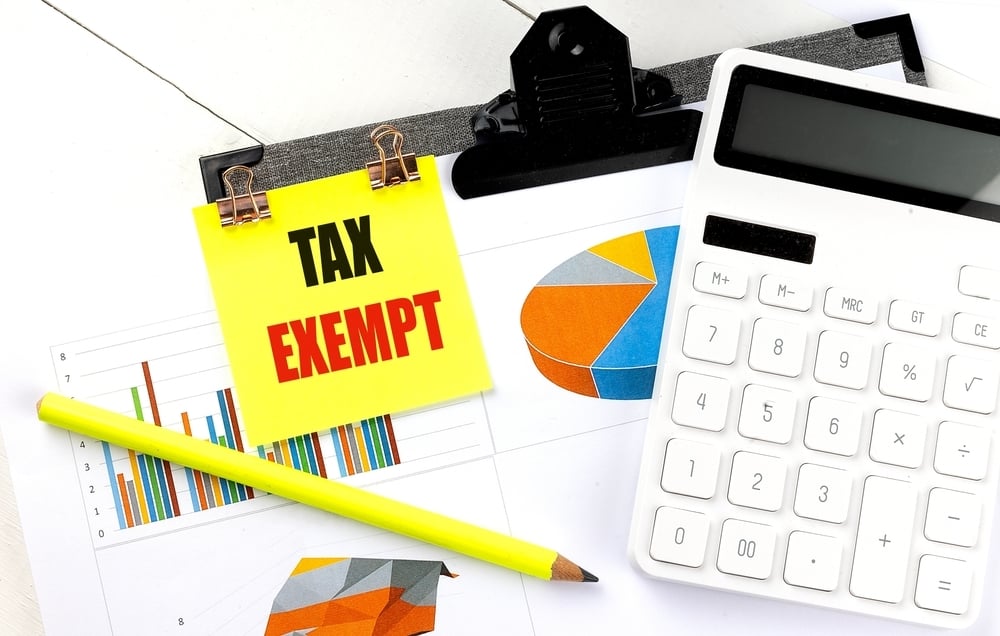How the OBBBA Changes FDII Rules for Exporters and Global Businesses
The One Big Beautiful Bill Act (OBBBA) brings sweeping changes to how businesses claim deductions for selling goods and services abroad. The...
8 min read
Wei Wei & Co
:
Aug 12, 2025 6:39:17 PM

President Donald Trump signed the “One Big Beautiful Bill Act” (OBBBA) into law on July 4, following a 51–50 Senate vote on July 1 and a 218–214 House vote on July 3. The push to meet the Independence Day deadline involved late-stage negotiations and notable last-minute changes. With enactment complete, tax-exempt organizations should evaluate the law’s impact and identify planning opportunities and pressure points. The OBBBA blends tax cuts and revenue raisers that touch nearly all businesses and investors. The Joint Committee on Taxation (JCT) scored the package as a $4.5 trillion net tax cut over 10 years under traditional scoring; using the Senate’s current-policy baseline (which assumes extensions of expiring provisions), the cost is about $715 billion.
OBBBA broadens who can be treated as covered by the 21% excise tax on compensation over $1 million paid by certain tax-exempt organizations. The rule now applies to all current and former employees (not only the five highest-paid employees for current or prior years), provided the individual was an employee in a tax year beginning after December 31, 2016. The change is effective for tax years beginning after December 31, 2025. Statutory exceptions remain for licensed medical professionals providing medical services and for employees who are not highly compensated under Section 414.
The prior flat 1.4% excise tax on net investment income is replaced with a tiered rate based on “student adjusted endowment” (aggregate FMV of non-program assets divided by number of students, measured at the prior year-end):
The definition of applicable educational institution now exempts institutions with fewer than 3,000 tuition-paying students in the prior year (up from 500). Institutions must also include student-loan interest on loans they (or related organizations) make and federally subsidized royalty income in gross investment income, overriding existing regulations. Effective for tax years beginning after December 31, 2025.
Tax-exempt and governmental entities may continue to elect direct pay under Section 6417 for eligible clean-energy credits, but several incentives are curtailed or eliminated:
The law: (1) disallows refunds after enactment for claims filed after January 31, 2024; (2) extends the statute of limitations to six years; and (3) increases penalties on preparers/promoters.
Corporations may deduct charitable contributions only to the extent amounts exceed 1% of taxable income, still subject to the overall 10% cap under Section 170(b)(2)(A). Excess contributions—and amounts disallowed by the 1% floor—carry forward up to five years. If total contributions do not exceed 10% of taxable income, no carryforward is allowed for amounts disallowed solely by the floor. Effective for tax years beginning after December 31, 2025.
Individuals may claim a charitable deduction only for amounts exceeding 0.5% of AGI. Existing percentage limitations by contribution type/recipient remain. A new cap on the value of itemized deductions effectively limits the benefit so that the maximum offset is equivalent to income taxed at 35% (not 37%), creating a de-facto 2% difference for top-bracket taxpayers. Excess contributions—and amounts disallowed by the 0.5% floor—carry forward five years; where no carryover exists, amounts disallowed solely by the floor do not carry over. Effective for tax years beginning after December 31, 2025.
The 60% of AGI limit for cash contributions to public charities (and certain private foundations under Section 170(b)(1)(F))—originally enacted by the TCJA—is now permanent. The act also adjusts how the 60% limit applies; as summarized, it may allow up to a 60% deduction even where total cash gifts are below 60% of AGI and additional non-cash contributions are made to eligible but non-public-charity donees.
Non-itemizer deduction reinstated and increased. A permanent partial deduction for taxpayers who do not itemize is restored: up to $2,000 (MFJ) or $1,000 (all others) for cash gifts to eligible charities. Non-cash gifts, donor-advised funds, supporting organizations, and most private foundations do not qualify. Effective for tax years beginning after December 31, 2025.
Individuals may claim a federal credit (max $1,700, five-year carryover) for contributions to a scholarship-granting organization (a Section 501(c)(3) other than a private foundation) that: provides scholarships to 10+ students, spends ≥90% of income on scholarships for eligible students, and limits aid to qualified elementary or secondary education expenses. Eligible students are from households ≤300% of area median gross income and eligible to enroll in public K-12. The credit is reduced by any state credit received, and no charitable deduction is allowed for amounts claimed as a credit. Scholarships for qualified elementary/secondary expenses are excluded from the recipient’s income. States must opt in and provide an annual list of qualified organizations. Effective for tax years beginning after December 31, 2026.
The SALT cap rises to $40,000 (MFJ) starting in 2025, with a 1% annual increase through 2029; the cap is halved for non-MFJ filers. In 2030, it reverts to $10,000. For 2025, the higher cap begins to phase out when modified AGI exceeds $500,000 (halved for other filers), with the phaseout threshold increasing 1% annually thereafter. The allowable deduction cannot fall below $10,000.
Although many changes apply beginning in 2026, several provisions take effect sooner or require near-term project timing (e.g., energy-credit windows). Exempt organizations should model effects across compensation policies (Sections 4960/162(m)), charitable-giving dynamics (corporate and individual floors, non-itemizer deduction), endowment taxation (Section 4968), and clean-energy plans (direct pay and phaseouts).
For assistance evaluating how these provisions affect your organization and for planning aligned to your mission and financial goals, contact Wei, Wei & Co., LLP.
The OBBBA expands the Section 4960 excise tax to apply to all current and former employees of certain tax-exempt organizations who were employed in any taxable year beginning after December 31, 2016. Previously, the rule applied only to the top five highly compensated employees.
Yes, but with limitations. Tax-exempt entities may still use direct pay under Section 6417 for qualifying projects; however, many clean energy credits are curtailed or phased out, including EV charging credits and clean vehicle incentives.
Corporations may now deduct charitable contributions only to the extent they exceed 1% of taxable income, up to the existing 10% cap. Excess amounts and disallowed contributions can be carried forward for five years, but only if the total does not exceed the 10% cap.
Individuals may deduct charitable contributions only if their total gifts exceed 0.5% of adjusted gross income (AGI). The deduction’s value is also capped so that it offsets income taxed at a top rate of 35%, not 37%.
Yes. The OBBBA permanently reinstates a partial deduction for non-itemizers: up to $2,000 for joint filers and $1,000 for others, for cash contributions to qualifying charities.
Most changes take effect for tax years beginning after December 31, 2025, although some provisions related to clean energy and the Employee Retention Credit take effect sooner.

The One Big Beautiful Bill Act (OBBBA) brings sweeping changes to how businesses claim deductions for selling goods and services abroad. The...

In the wake of large-scale staffing reductions, the Internal Revenue Service (IRS) is undergoing a transformation that is already affecting taxpayers...

In 2022, Congress passed the Inflation Reduction Act (IRA), a broad piece of legislation featuring provisions to advance clean energy production and...